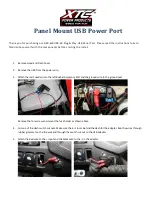
93
T R O U B L E S H O O T I N G
Warning!
n
Replace the blown fuse with a
fuse of the same ampere value. Do
not use a fuse of higher amperage
because this could cause damage
the electrical part or even cause a
fire.
n
If the fuse blows repeatedly after
switching on the respective elect-
rical consumer, it is necessary to
contact and have the vehicle repai-
red at the authorized service stati-
on.
n
Never repair the blown fuses.
n
Do not use a screwdriver or other
metal object to remove the fuse.
n
The vehicle with a discharged battery
may be started only by connecting it to
the battery of some other vehicle with
the same nominal voltage.
n
Only approved jumper cables of
sufficient cross section may be used.
n
Do not use cables with insulated
clamps only.
Warning!
The battery of the other vehicle must
have the nominal voltage of 24V.
n
When starting, the engine of the
vehicle, whose battery is used to start,
must run.
Connecting procedure
1. Connect one clamp of "+" cable
(item 1) to positive terminal of the front
discharged battery (item 3).
2. Connect clamp on opposite end of
the same cable to positive terminal of
24V booster battery (item 5).
3. Connect clamp of "-" cable (item 2) to
negative terminal of 24V booster battery
(item 5).
Use of jumper cables to start the engine
FN0991
4
3
2
24V
5
1
Summary of Contents for D 100
Page 66: ...OPE RAT IN G INST RU CTIONS 66 ...
Page 83: ...83 TRO UBLES HOOT ING ...
















































